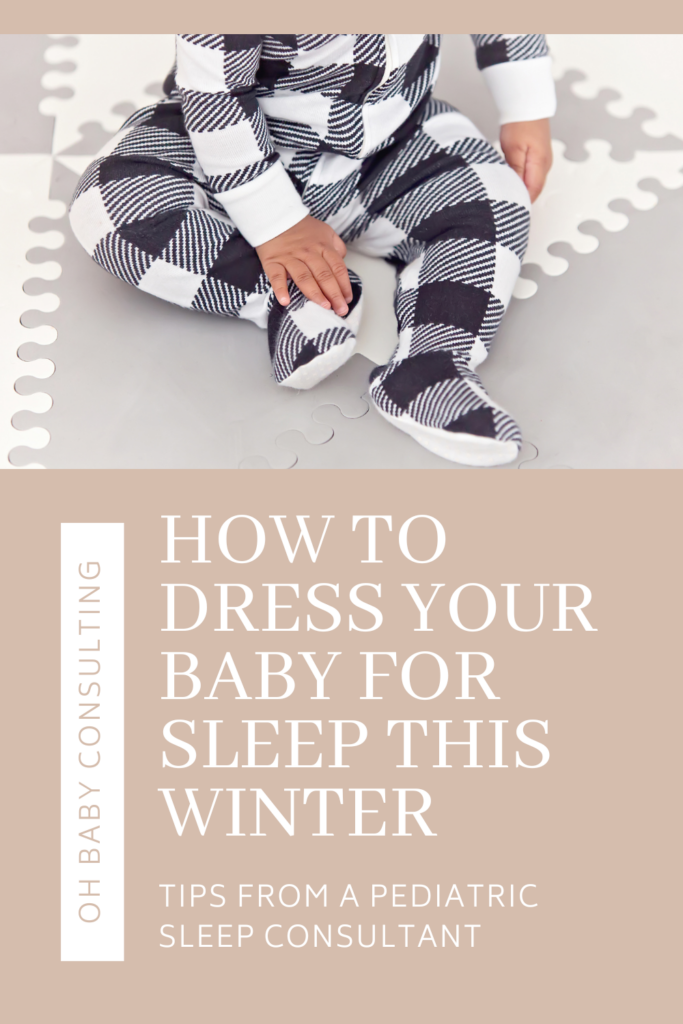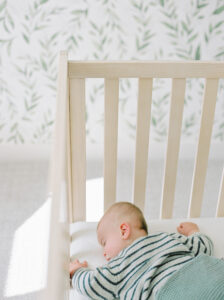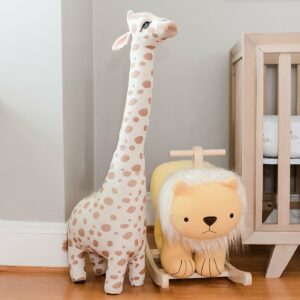As winter sets in and cozy nights become the norm, keeping your baby snug and safe during sleep becomes a top priority. The colder weather brings its own set of challenges, so I wanted to share 5 tips to make sure your family stays sleeping soundly + safely in the cooler weather.
1) Keep a comfortable room temperature
As temperatures outside decrease, it’s important to make sure your child’s room stays a comfortable sleeping temperature. Much of this is going to depend on the insulation of your home and the heating/cooling options you have. Ideal sleeping temperature is somewhere between 65-72° F (18-22° C). If you don’t have a thermostat in your baby’s room, grab a room thermometer like this one which is typically more accurate than the one on your monitor.
2) Choose safe bedding + sleepwear
Even though it’s cooler, it is especially important that you continue to not use blankets or other loose bedding in your child’s crib if they are under 12 months. Truthfully, blankets (for warmth) really aren’t necessary until your child is over 2 – they’re not likely to keep them on anyway. Instead use a swaddle (0-10 weeks) or sleep sack to keep your younger child warm.
Some families choose to increase the TOG of their child’s sleep sack in the winter.
What is TOG?
TOG stands for Thermal Overall Grade and is a way of categorizing a sleep sack’s warmth. The lower the TOG number, the lighter the fabric is. I like to think of it in terms of adult bedding:
0.5 = sheet
1.0 = blanket
2.0+ = heavy comforter
If your child’s room is well temperature controlled, this usually isn’t necessary. If you do choose to use a heavier sleep sack (1.5-2.0 TOG), make sure that you’re dressing your child comfortably underneath. If your child’s room does trend cooler in the winter, you can also increase layers (ie a cotton bodysuit under footed PJs) instead of switching sleep sacks.
3) Prevent overheating to lower SIDS risk
If you have a newborn this winter, this one is especially important: avoid excessive bundling which can lead to overheating and increase SIDS risk. Your child should not be sleeping in a hat or mittens. These things both increase the risk of overheating but also pose suffocation risks as well.
It is also important to know how to gauge your child’s internal temperature. To determine whether your child is sleeping at a comfortable temperature, feel their chest, tummy, or back. These areas should be warm + dry, not hot, red, or clammy. Cold hands are not an indication of core body temperature, so it’s okay if your child’s hands feel chilly to the touch.
4) Check smoke + carbon monoxide detectors
Especially in the winter months when fire places + heating systems are in use, it is so important to make sure that your smoke alarms and carbon monoxide detectors are working properly.
TO DO: Avoid the middle-of-the-night jump-scare of a low battery alert and put fresh batteries in now!
5) Have a consistent sleep schedule
This one isn’t really unique to the winter season, but a child who is on a consistent sleep schedule is going to be better prepared to fight off bugs this cold + flu season. Sleep is the best medicine!!
^^ If you’re struggling in this area, let’s get you set up with some support!
As always, my goal is to empower you with knowledge and support to help your family sleep well, no matter the season.














